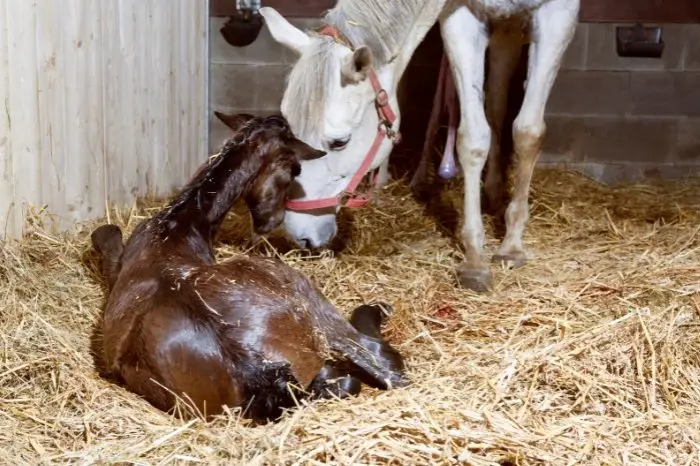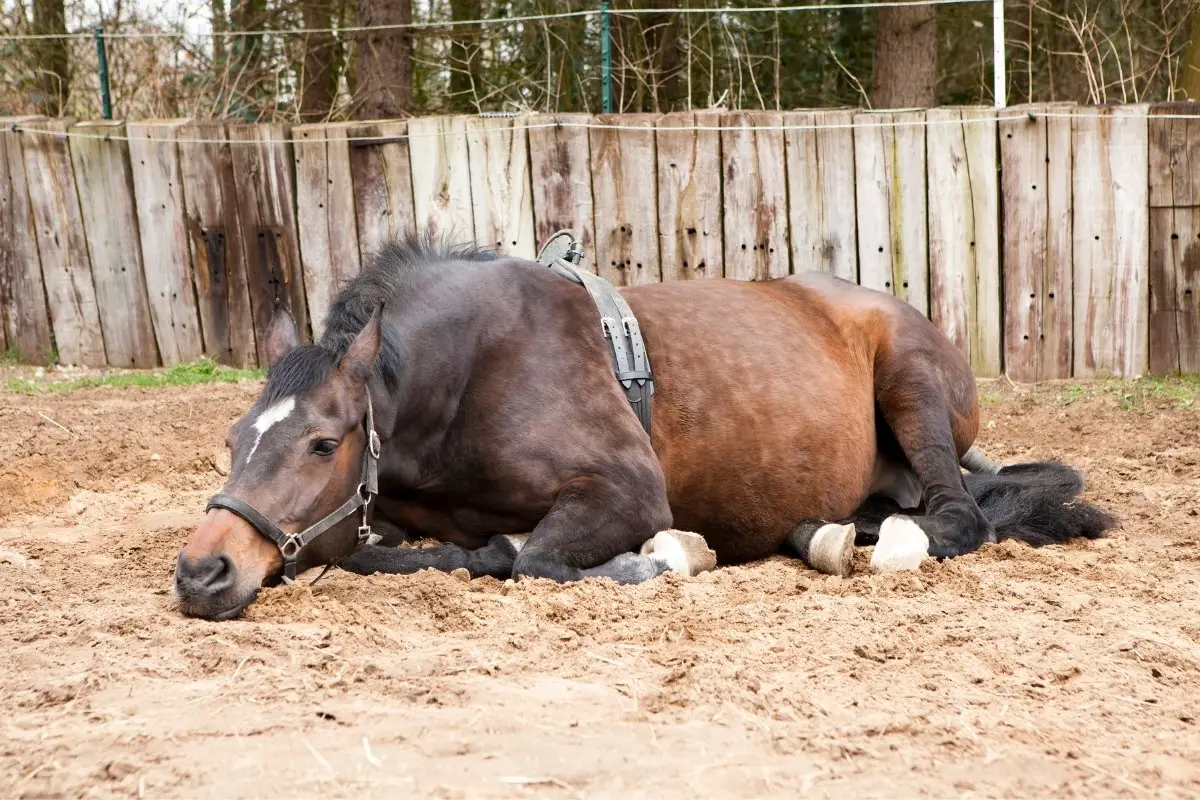Last Updated on May 30, 2022
One of the most exciting things in the equestrian world is the arrival of a new foal. If you have a pregnant mare, knowing the signs of labor for horses is essential to ensure you are ready for the arrival of the new foal. If possible, you want to be there for the birth to make sure that everything goes smoothly.
In most cases, a mare will show behavioral signs that she is about to give birth, giving you a head’s up. There are also physical changes you can notice days before the birth that can help you prepare as well. When a mare is nearing the final stage of her pregnancy, you want to regularly monitor her.
Signs A Horse Is Ready To Give Birth
The average gestation time in a horse is 11 months. However, the gestation period can range anywhere from 10 ½ to 13 months long. Normally, within the last month of pregnancy, a mare will begin to show signs that she is ready to give birth.
Distended Udder – Signs Of Labor For Horses
One of the first signs that a foal will be arriving soon is distending udders. Normally within the last month of pregnancy, the udders will distend and it is often one of the first signs a mare is getting ready to give birth.
Generally, a mare’s udder will fill up during the night, and then during the day, they will shrink. If your mare’s udders remain full, she will likely give birth within days or hours.
Read more about What Do Bots Do to Horses?
Enlarged Teats
In the days leading up to your mare giving birth, the teats will begin to descend outwards as her utter descends. This is due to the pressure of the growing milk supply, as the mare’s body is preparing for the arrival of the new foal.
Waxing Teats and Milk Flow – Signs Of Labor For Horses
Within weeks or even as soon as 12 hours to birth, wax-like beads will likely appear on the end of each teat. Though they will not appear on every mare, this is colostrum, which is vital for foals to drink within hours of being born.
In addition to droplets of colostrum, some mares will exhibit secretions of milk. When this happens, the birth of the foal will be happening soon.
Check Out What Do Strongyles Do?
Relaxed Vulva
Within 24-48 hours of giving birth, a mare will exhibit a relaxed vulva. This is the mare’s body preparing for the birth of the foal.
Restlessness And Irritation – Signs Of Labor For Horses
Within weeks or hours of giving birth, a mare may become restless and irritable. When the first stage of labor begins, the mare will often seek a quiet location to give birth.
Signs Of Labor For Horses
When a horse is within hours of giving birth, she will often begin to exhibit behavioral changes. Once a horse begins labor, there are three stages. In the first stage, there are key signs to look for that indicate the birthing process is about to begin.
Have you wondered How Do Horses Handle The Cold?
Stage One
Stage one is when uterine contractions begin, indicating foaling is about to happen. Signs to look for that the mare is going into labor include restlessness, getting up and down and curling of the top lip. In addition, other signs include picking up the hind legs, sweating, looking at the abdomen, pawing and swishing the tail.
The mare may also urinate and defecate more frequently, indicating that she is not colicing, but rather going into labor. Though some mares may exhibit all or several of these signs of labor, others might not show any.
The first stage of labor is generally the longest, as it takes between one to four hours. Owners should make sure the mare is in a secure, quiet place such as a birthing stall or paddock.
Stage Two – Signs Of Labor For Horses
Stage two begins with the rupture of the chorioallantois, which is more commonly known as the water breaking in humans. At this point, uterine contractions begin in earnest and if the mare is not already lying down yet, she will now. During this time, the foal begins to move through the pelvic canal.
After the water breaks, the front feet and head will emerge. In a normal birth, the front feet should be delivered first with the soles facing down. One of the front feet is typically slightly ahead of the other and the muzzle of the foal will be at the level of its knees.
The mare will have uterine contractions and active abdominal contractions until the foal is completely out. The foal will generally be delivered between 10 to 20 minutes upon the rupture of the chorioallantois.

Stage Three – Signs Of Labor For Horses
In stage three of labor, the fetal membranes pass. The placenta and other membranes should be out of the mare within three hours of the foal being born. During this time, the mare will generally show some degree of discomfort from the uterine contractions.
Knowing The Signs Of Labor In Horses
In the days leading up to giving birth, a mare may become irritable and restless. When a mare begins the first stage of labor, she will up and down, curl her top lip, pick up the hind legs, sweat, look at the abdomen, paw and swish her tail. She may also urinate and dedicate more frequently.
Do you have any questions regarding signs of labor for horses? If so, please ask any questions regarding labor in horses in the comments.


